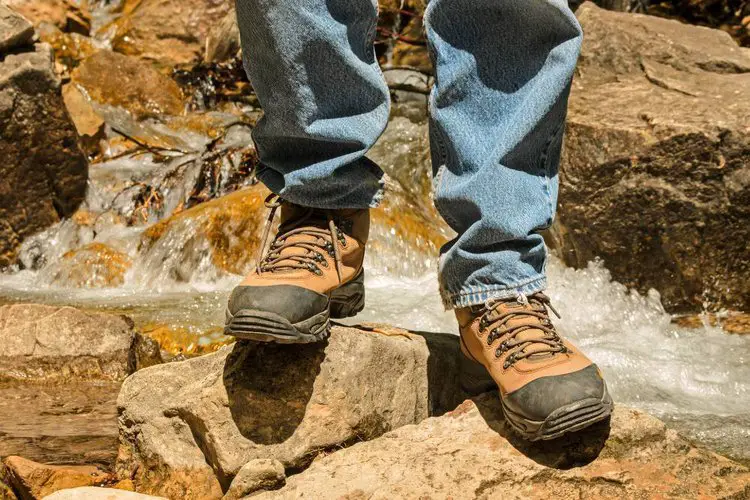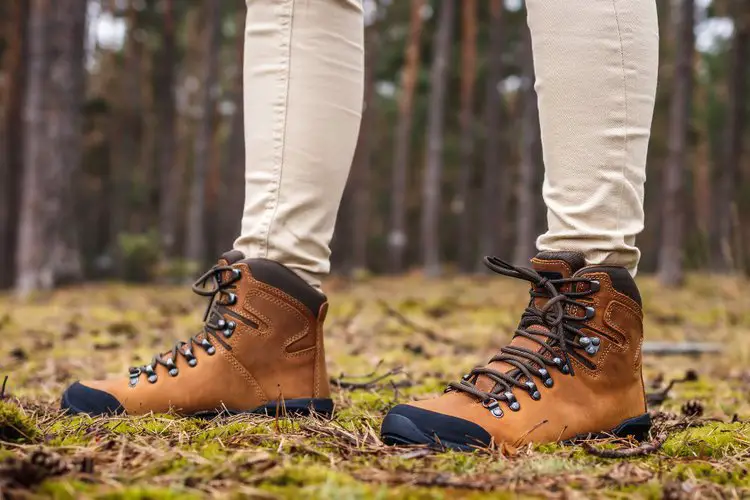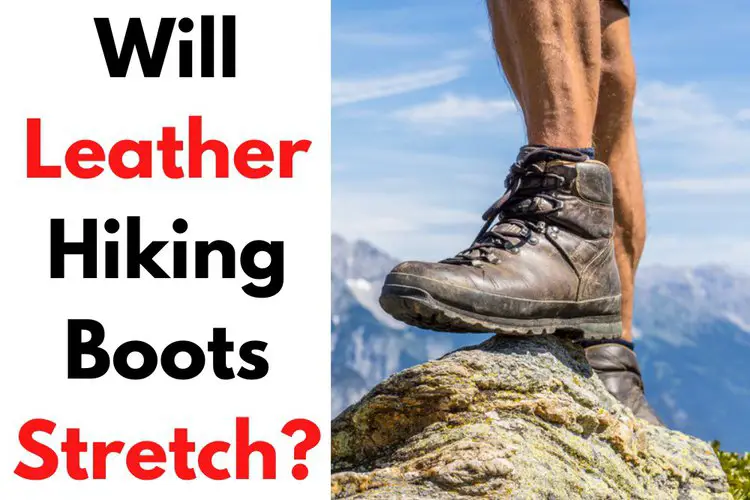Key Takeaways:
- Leather hiking boots can stretch over time due to exposure to heat, moisture, and pressure.
- Different types of leather react in various ways to stretching, so it’s important to understand the type of leather used in your boots and choose accordingly.
- A proper break-in process and the right size can help ensure a comfortable fit and prevent stretching.
First, let’s start with a basic understanding of what stretching means in the context of hiking boots.
When a boot is said to be stretched, it means that the material has become longer, wider, or both. This can happen when the material is exposed to heat, moisture, or pressure over time.
This is because leather is a natural material that is made up of fibers, and those fibers can loosen and stretch when they are exposed to heat and moisture.
Heat can cause the fibers in the leather to relax, making the boots more pliable and susceptible to stretching. This is why leather hiking boots should never be left in direct sunlight or near a heat source, as this can cause them to stretch beyond their original shape.

Moisture can also cause leather to stretch, especially if the boots are wet for an extended period of time. This can happen when hiking in wet conditions or if the boots are not properly dried after getting wet. The fibers in the leather absorb the moisture and become softer and more pliable, leading to stretching.
Pressure is another factor. This can happen when the boots are worn for long periods of time or if they are too tight when first purchased. The pressure of walking and moving can cause the fibers in the leather to loosen and stretch, leading to a change in the shape of the boots.
It’s important to note that while leather hiking boots can stretch, they will not necessarily stretch to the point where they become too large or uncomfortable to wear.
However, it’s always a good idea to purchase hiking boots that fit well from the start and to take proper care of them to minimize any stretching that may occur over time.
Contents
Leather hiking boots will stretch, but how much?
Hiking boots can indeed stretch, but to a limited extent. The amount of stretching that occurs depends on several factors, such as the type of leather used, the quality of the construction, and how often the boots are worn.
Generally, high-quality leather hiking boots will stretch less compared to lower-quality ones. It’s also important to note that leather hiking boots will not stretch in the same way as fabric or synthetic materials.
This is because leather is a natural material and has a unique set of properties that determine how it will stretch. Leather will become more pliable and conform to the shape of your foot over time.

This can be a good thing, as it can lead to a better and more comfortable fit. However, it can also cause some problems if the boots stretch too much.
One of the key factors that will determine how much your leather hiking boots will stretch is how often you wear them. The more you wear them, the more they will conform to your feet and the more they will stretch.
This is why it’s important to break in your leather hiking boots before going on a long hike. If you wear them for a few hours each day for a few days before your hike, they should stretch just enough to be comfortable.
Another factor that will impact the amount of stretching is the type of leather used. Some types of leather are more stretchy than others, so it’s important to consider this when choosing your hiking boots.
For example, here are the characteristics of some primary types of leather:
- Full-Grain Leather: This type of leather is the toughest and most durable, and it stretches very little over time. This makes it a popular choice for hiking boots, as it provides excellent support and protection for the feet.
- Nubuck Leather: Nubuck leather is a type of full-grain leather that has been sanded to create a suede-like texture. It tends to stretch slightly more than full-grain leather, but still provides excellent support and protection.
- Split-Grain Leather: Split-grain leather is created from the lower part of the hide and is not as durable or supportive as full-grain leather. This type of leather is more likely to stretch over time and may not be the best choice for serious hikers.
Last update on 2023-11-10 / Affiliate links / Images from Amazon Product Advertising API
Knowing the differences between these materials can help you make the right decision and choose a pair of hiking boots that will best meet your needs.
So, what does this mean for your hiking experience?

If your leather hiking boots stretch too much, they can become too loose, which can lead to blisters, hot spots, and other foot problems. On the other hand, if they don’t stretch enough, they can be too tight and cause discomfort. The key is to find the right balance between stretch and support.
In conclusion, leather hiking boots can indeed stretch over time, but the amount of stretching that occurs will depend on several factors, such as the type of leather used, the quality of the construction, and how often the boots are worn.
To ensure that your leather hiking boots provide a comfortable fit, it’s important to choose the right type of leather (following the above guide) and to break in your boots before going on a long hike.
With the right combination of stretch and support, leather hiking boots can be an excellent choice for your next outdoor adventure.
I hope this article has been helpful in answering your question about whether leather hiking boots will stretch. If you have any further questions, please leave a comment below to let us know.


